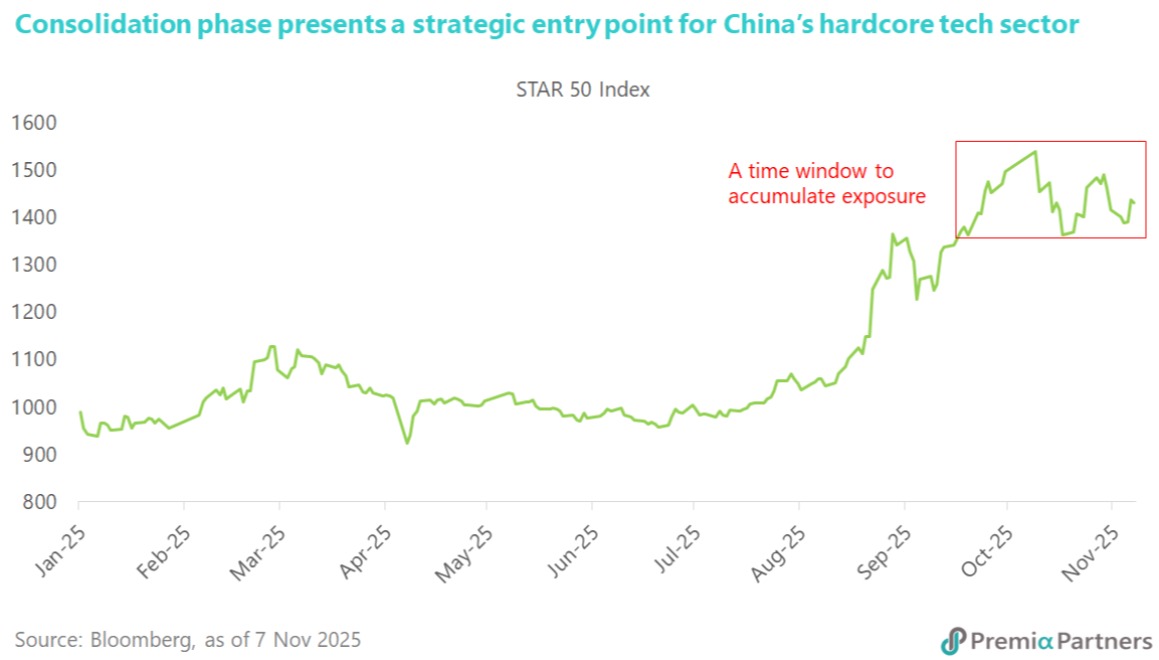
featured insights & webinar
Amidst months of volatile global equity market performance and unprecedented trade policy uncertainty, the first quarter brought one of the most important events on China’s economic calendar: Beijing’s annual “Two Sessions” meeting, which offers a chance for officials to set economic targets and announce policy priorities for the year ahead. In this article, Dr. Phillip Wool, Global Head of Research of Rayliant Global Advisors, discusses how China policymakers are responding to Trump 2.0 tariff threats, and what it all means for A shares performance going into Q2.
May 07, 2025
The state of China’s consumer spending is better than how it has been portrayed in the media. Further, the latest developments and data suggest that the growth rate will get even better: The Chinese Government is placing more emphasis on domestic consumption as a driver of growth as global trade is disrupted by higher US tariffs. Meanwhile, the latest revenue figure from JD.com suggests a quickening of the pace of retail spending in the final quarter of 2024. The online retailer just reported 13.4% year-on-year growth in sales for the December quarter – the fastest growth rate in almost three years. This compares with its full year revenue growth rate of 6.8%, pointing to the rising growth momentum. In this article, we discuss about the consumption phenomenon in China, driving the decent growth of per-capita consumer spending in China at 5.1% YoY in real terms in 2024 (far higher than that of 1.8% in US).
Mar 20, 2025
It is worth noting that while the significant rally in BATJX – Baidu, Alibaba, Tencent, JD.com, Xiaomi – and the offshore listed tech/internet players have dominated headlines lately, the bottoming out of the overall China market since the policy shift in late September last year started onshore, with A shares experiencing a sharper rebound first and with a more slower but sustained trend, as domestic investors were more sensitive to the reset in policy tones and significant shift in government’s commitment to reviving economic growth and capital market activities. In this article, Partner & Co-CIO David Lai discusses the factors that could drive a more sustained outperformance in onshore equity market, and why it is a good entry point to rotate from offshore to onshore companies in policy supported sectors.
Mar 20, 2025
While the market is focused on the size of the fiscal stimulus emerging from the Two Sessions currently underway in Beijing, there are other important drivers that could shape the outlook for the relative performance of Chinese equities versus US stocks. The first is about relative valuation; the second is cyclical – that is, the turning of the US economic cycle; and the third is secular – that is, the sustainability of the repeated use of the “policy bazooka” in the US. In this article, our Senior Advisor Say Boon Lim discusses what causes the underperformance of US market since the Inauguration of President Trump, and diversification out of the US equities has become more important than ever while the slump in consumer confidence and potential debt crisis continue to add downward pressures on the US economy.
Mar 09, 2025
The Two Sessions have delivered a strong signal: China’s economy remains focused on steady growth, with robust government support, despite mounting global uncertainties. With an economic target of 5% growth for 2025 and the highest budget deficit in three decades, policymakers are set to implement a more proactive fiscal policy. This will include increasing government financing to drive domestic demand and boost private sector confidence. In this article, our Partner & Co-CIO David Lai highlights growth and policy supported areas to focus, during this ideal window to add exposure for Chinese equities, particularly opportunities from leaders in artificial intelligence (AI), semiconductors, robotics, and biotech that are still trading at attractive valuation via a via global and even offshore listed China peers.
Mar 09, 2025
After a stellar third quarter on renewed hopes of powerful fiscal stimulus, Chinese stocks followed shares in other emerging markets down in Q4, giving back some of those gains as the CSI 300 Index slipped 1.7% (CNY). Weighing on mainland stocks were investors’ fears that Trump 2.0 tariffs, along with a lack of follow-through by Chinese policymakers, might hinder the country’s growth revival. In this article, Dr. Phillip Wool, Global Head of Research of Rayliant Global Advisors, discusses what will spur Beijing to inject more stimulus, where it might go, and what Trump’s trade war and the DeepSeek saga might tell us about where A shares outperformance could come from in 2025.
Feb 24, 2025
Robust projected earnings growth for 2025 – part of a multi-year growth story driven by Artificial Intelligence – will give the Taiwan market a helpful buffer amidst geopolitical and trade uncertainties. Also, Taiwan has added protection from being the indispensable total supply chain for the tech industry – with its dominance driven by semiconductor and technology manufacturing leaders like TSMC, Hon Hai, and MediaTek. Economic growth is expected to remain solid at around 3.3% for this year. Beyond the tech sector, the government’s push to upgrade its financial services capabilities, with high domestic penetration and receptiveness of financial products, also provide promising tailwinds. The risks of Trump 2.0 make Taiwan a nuanced opportunity this year. It threatens volatility. But the AI revolution remains a multi-year growth driver, and Taiwan's strategic role, indeed global leadership in semiconductor manufacturing, offers strong long-term potential. Notwithstanding geopolitical considerations and general market risks, the medium to long term growth trajectory remains robust. In this article, our Portfolio Manager Alex Chu suggests that corrections could provide the long term investors attractive entry points into Taiwan’s technology-driven equity market which has a low correlation with global equity market as well as other major asset classes.
Jan 27, 2025
Asia ex-Japan investment grade credits should continue to outperform their global peers in 2025, amidst risks in the US of a continued rise in US Treasury yields, at a time when corporate credit spreads in the US are already at cyclical lows. On the other hand, Asia ex-Japan credits will likely be supported by a combination of monetary easing, shorter duration, the offer of significant yield pickups, credit upgrades and likely lower issuance. Further to Part 1 and Part 3 of our 2025 outlook which dealt with the US and ASEAN market outlook, in this article we discuss how Asia ex-Japan US Dollar Investment Grade Credits (using JACI IG as the investment universe) generate allocation alpha in a complex landscape dominated by concerns over economic uncertainties in the U.S – about its fiscal outlook, a resurgence in inflation, rapidly rising government debt and the impact of radical policy plans.
Jan 27, 2025
Emerging ASEAN stock valuation has likely overpriced the trade threat posed by the incoming Trump Administration. This has created a value opportunity that has priced a catastrophe akin to the COVID pandemic which is unlikely to play out. The forward PE ratio for the Dow Jones Emerging ASEAN Titans 100 Index is almost at COVID-19 lows. The valuation of the index also hit a low late in 2016, when Donald Trump was elected to the Presidency the first time. In tis article, our Senior Advisor Say Boon Lim discusses why the region could be a sweet spot for value investing, given the growth trajectory and drivers in Emerging ASEAN, which could be benefited rather than suffered from US tariffs.
Jan 07, 2025
China’s financial markets stand on the cusp of resilience and opportunity, buoyed by proactive government interventions and structural reforms. Beijing’s commitment to fostering innovation in artificial intelligence, semiconductors, and renewable energy highlights its strategic pivot towards self-reliance. Meanwhile, reforms aimed at enhancing corporate governance and shareholder returns signal a shift toward greater efficiency and market appeal. While challenges persist, including heightened US tariffs and soft domestic demand, the leadership’s “all-in” growth strategy and flexible policy framework highlight a clear long-term vision for sustainable development. For investors, China in 2025 presents a wealth of opportunities across a range of sectors—from cutting-edge technology and dividend-focused equities to stable government bonds and a recovering real estate market. In this article, our Partner & Co-CIO David Lai suggests that this year could be one of the strategic investments for China with potential for substantial returns.
Jan 07, 2025
BY TOPICS
Chart Of the Week


David Lai , CFA
CFA
Following the Xi–Trump meeting at the recent APEC Summit, market sentiment has turned cautiously optimistic on hopes of a renewed trade truce between China and the US. Some investors, however, view this détente as a sign that China’s drive for technological self-sufficiency could ease. Although the meeting did not address whether Nvidia’s latest Blackwell-series AI chips might be exported to China, speculation has risen that improving relations could lead to a relaxation of export restrictions — a development some perceive as negative for Chinese semiconductor and hardcore tech names. We take a different view. China’s determination to reduce reliance on imported technology remains firm. Recent initiatives, such as the reported requirement for state-funded data centers to adopt domestically produced chips, underscore the government’s resolve to build a self-sustaining semiconductor ecosystem. In mid-October, China Mobile also announced plans to construct the nation’s largest intelligent computing infrastructure by 2028, featuring a “100,000-GPU cluster” that will fully utilize domestic chips. Top Chinese officials have reiterated that innovation and advanced manufacturing remain core national priorities. These developments suggest that even if US export curbs were relaxed, China’s policy direction will continue to favor domestic research, production, and technological substitution. For investors looking to capture this structural growth opportunity, the Premia China STAR50 ETF provides an efficient and diversified vehicle. It offers focused exposure to leading STAR Market companies at the forefront of China’s innovation agenda — from semiconductors and AI to next-generation industrial technologies — positioning investors to benefit from the country’s ongoing technology upgrade.
Nov 10, 2025













